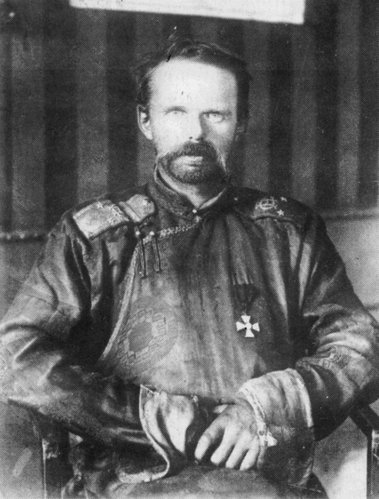Again on the joys of research – because focusing too much on that mess that is the Russian Civil War would be monotonous, and I really like (no, seriously, I like it) doing research on the fly when writing.
So, let’s put down the books and the videos about Russians killing each other in the snow, and let’s look into something different.
Like, the Soldier’s Disease, a definition first coined in 1915 to describe morphine addiction among the troops – a phenomenon observed for the first time during the American Civil War.
Ah, doing research, an endless series of discoveries…

The good part of doing research on the fly is that more often than not, what you discover can be plugged in directly into the story, using it to develop some background idea or so-far-ignored branch of the plot.
The Soldier’s Disease works like this in my current story.
I looked up morphine because I needed a “treasure” for my story, and gold tends to be unwieldy and overused – and as an alternative to cash or precious metals, drugs are an all-time classic: compact, easily convertible into currency, and much requested in times of crisis or war.
So, I checked out Wikipedia and a few other websites.
I discovered the name “Soldier’s Disease”, that I will have to use because it sounds cool, and I found out that during the Great War doctors would draw a cross on the forehead of wounded men they had dosed with morphine to avoid them being dosed again, and thus overdosing. Another interesting bit of trivia to be played for color.

Morphine was also part of the medical supplies the Central Powers happily provided to White Russians during the Civil War. There was a lot of other debatable stuff in those supplies, but at least now I know where the cocaine to which Roman von Ungern-Sternberg, aka the Bloody Baron, that old bugbear of mine, was so partial.
Because yes, there was a moment in my life in which I actually wondered where the Mad Baron got his blow in the middle of Siberia. Now I know: it was part of the medical supplies. It even had a brand name, “Forced March” (at least the one provided to British troops) – and yes, they should have spent a little more on marketing, but as they say, it’s the sort of product that sells itself.
In case you are curious, I refer you to this article in the invaluable Encyclopedia 1914-1918.
But anyway there you go, my plot points have been checked and confirmed – I am a serious historical fiction writer (or I’m quite good at pretending to be one).
I also spent some time reading up on the effects of the drug and withdrawal symptoms, and a quantity of other very unpleasant stuff – because it is really unpleasant stuff.
So now I’ll do dinner, and then move on to another point I need to check out for my story… typhoid fever.
Yes, it’s going to be one of those days.

20 November 2019 at 23:03
Never heard of Morphine being called the ‘Soldiers Disease’ before, even though I knew it became an issue here in the USA as you said after the Civil War.
Although I found it pretty amazing when I read years ago that Heroin was invented to get people off of the Morphine.
Look how well that turned out.
LikeLike
20 November 2019 at 23:08
Yes, heroin is called like that because it gave “heroic” results in getting people off morphine – of course they became junkies, but doctors apparently did not notice that straight away. And indeed, from what I read, Bayer created aspirin because they had to find a use for the by-products of their production of “medical heroin”.
And I was, too, surprised by the “Soldier’s Disease” label, but it appears to be confirmed.
LikeLike
21 November 2019 at 03:30
Aspirin was created from synthetic dye by-products (still sounds crappy, but it’s better than being a by-product of heroin). Created by Felix Hoffman, who also created Heroin, he was employed by the Bayer company in the 1890’s. He synthesized both products during the same time period.
That’s how the myth of the aspirin/heroin connection got started.
Go here:
https://www.forbes.com/sites/carmendrahl/2017/06/12/five-things-heroins-curious-chemistry-history/#7b16e665157c
And you can skip to section 4 for the details. The only connection between the two drugs is that the same synthetic dye by-product was used in both.
I know, I’m anal, sue me! LOL!! 😉
LikeLike
21 November 2019 at 17:34
I’ll file it and use it in a future story.
Nothing goes to waste, hereabouts.
LikeLike